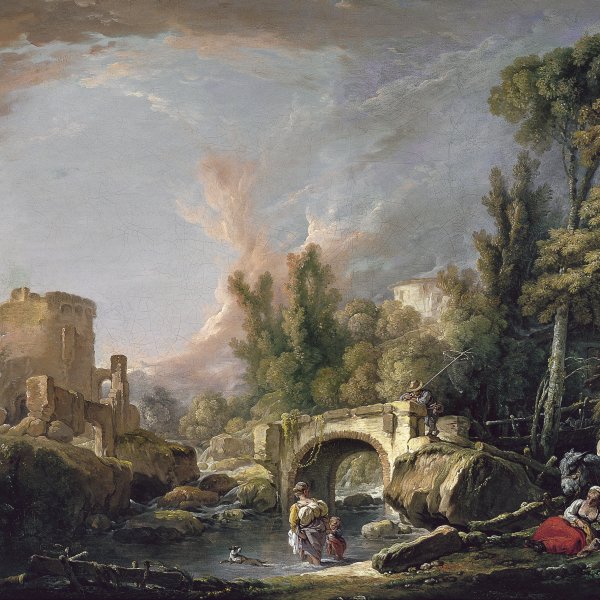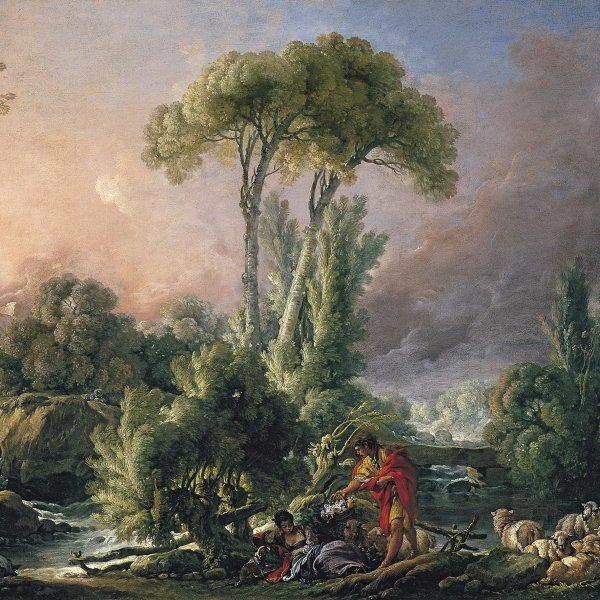François Boucher
Son of a craftsman and painter, Boucher showed remarkable artistic talent from an early age. He trained with the painter François Lemoyne between 1721 and 1723, and in 1723 won the Prix de Rome. He continued his studies in the field of printmaking with the engraver Jean-François Cars, executing reproductive prints after Watteau. Boucher never abandoned his printmaking activities and continued to illustrate books throughout his career. Between 1727 and 1731 he visited Italy in order to expand his artistic knowledge. While there he painted historical and religious compositions. In Italy, Boucher travelled to Rome, Genoa and Parma, devoting his time to studying the work of Correggio and the Venetian painters. The artist achieved success through his galante scenes, a subject-matter that allowed him to develop a distinctive style. In 1734 he was admitted to the Académie where he presented the painting Rinaldo and Armida (Musée du Louvre, Paris). Three years later he was made a professor at that institution. Boucher received his first royal commission in 1731 for a series of four grisailles for the Queen’s apartment at Versailles. From then on he worked on a range of projects for the court over the course of his career. Boucher was active both as a painter and a decorator of a wide range of objects including furniture, fans, Sèvres porcelain and theatrical curtains, all pained with bucolic scenes. His mature phase spans the years 1734 to 1764, during which he produced a number of his greatest masterpieces in the 1740s. Among other positions Boucher was set designer for the Royal Academy of Music between 1744 and 1748, director of the Gobelins tapestry manufactory in 1755, and director of the Académie in 1765. That same year he was appointed Court Painter. Protected by Madame de Pompadour, Boucher exhibited in the Salon from 1740 onwards and became the object of vehement criticism by Diderot in the 1760s at a time when his style began to fall out of favour. Boucher was an extremely versatile artist whose repertoire included a wide range of themes, from religion and mythology to portraits, rural and pastoral scenes, and landscapes. His fame reached Sweden where he was commissioned to produce work for the royal collection.






